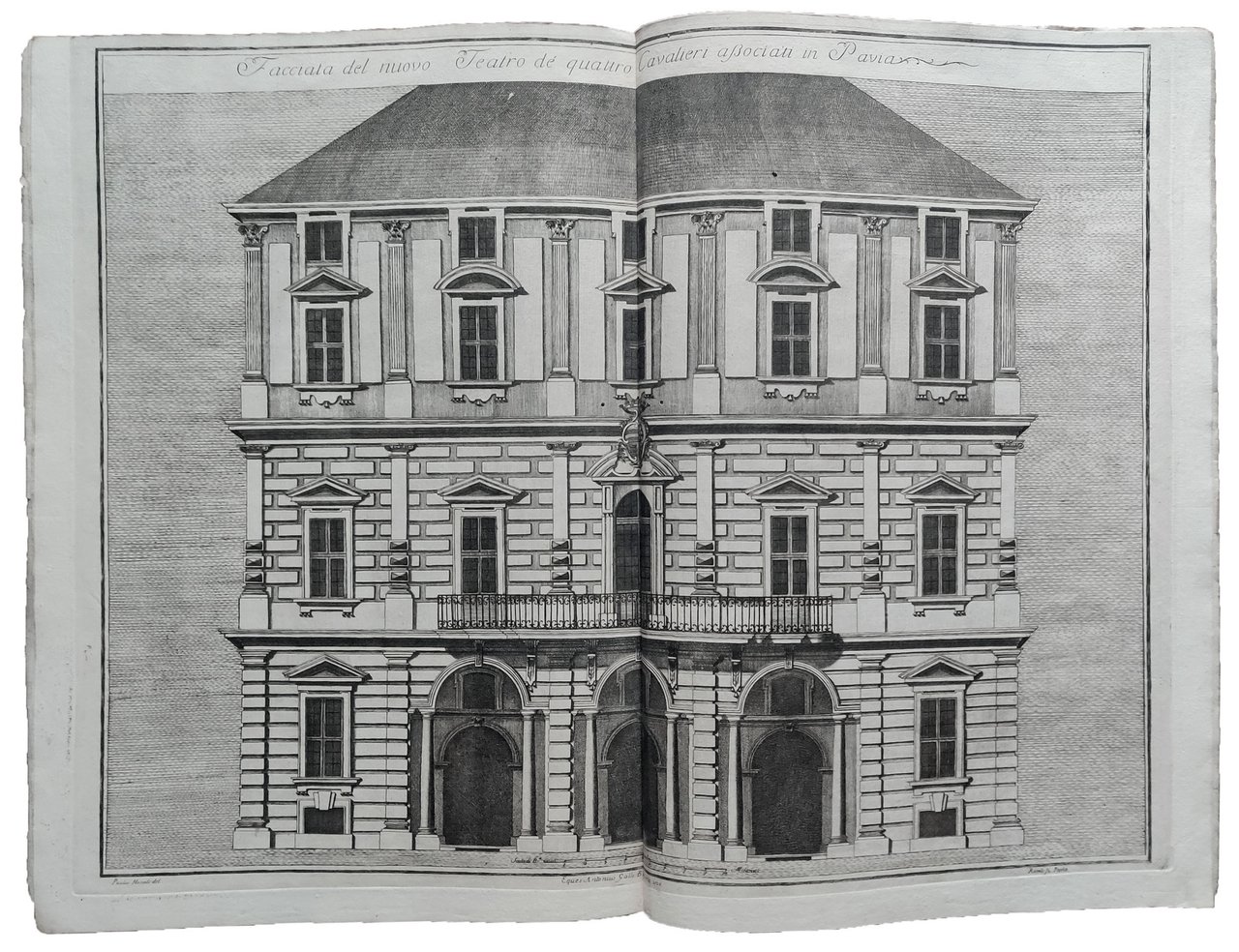
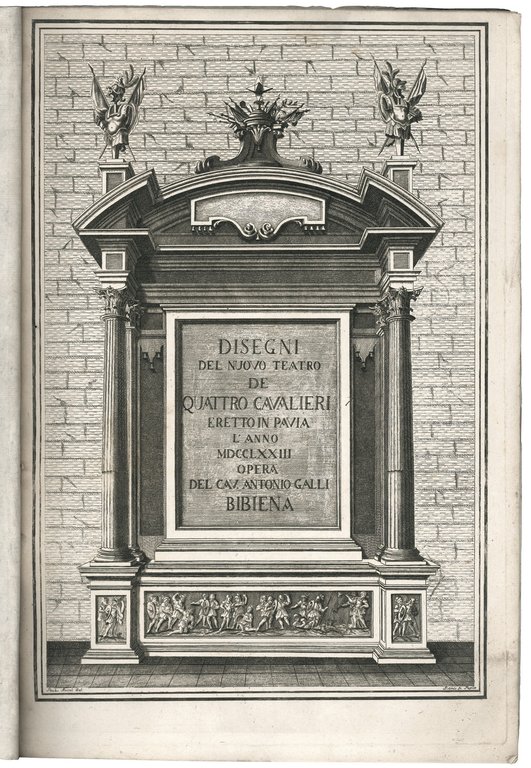
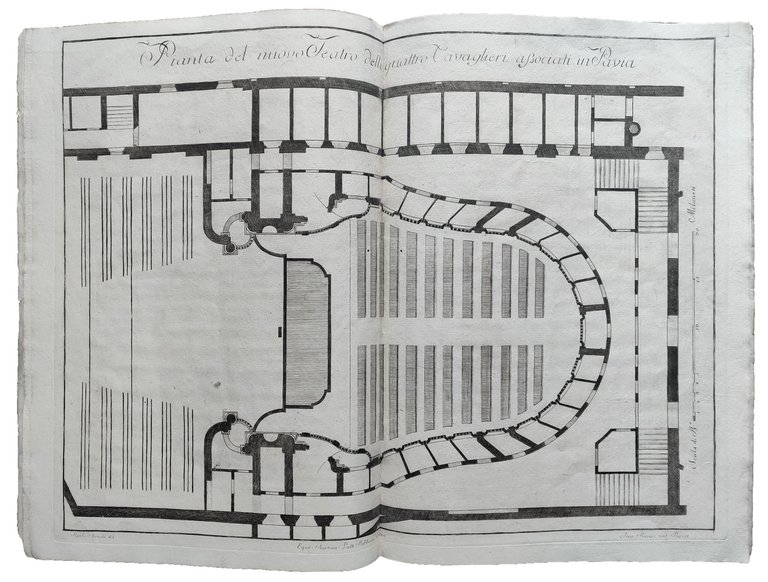
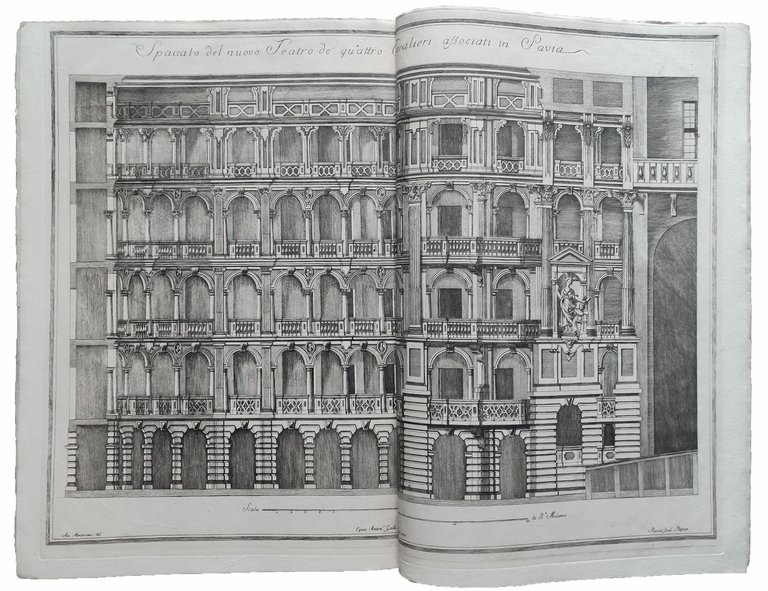
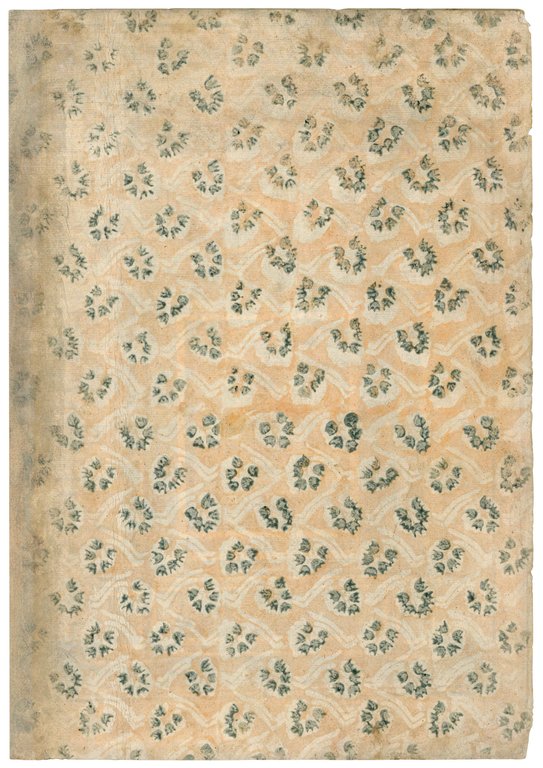
Libri antichi e moderni
GALLI BIBIENA, Antonio (1697-1774)
Disegni del nuovo teatro de quattro cavalieri eretto in Pavia l'anno MDCCLXXIII opera del Cav. Antonio Galli Bibiena
[c. 1773]
3900,00 €
Govi Libreria Antiquaria
(Modena, Italia)
Le corrette spese di spedizione vengono calcolate una volta inserito l’indirizzo di spedizione durante la creazione dell’ordine. A discrezione del Venditore sono disponibili una o più modalità di consegna: Standard, Express, Economy, Ritiro in negozio.
Condizioni di spedizione della Libreria:
Per prodotti con prezzo superiore a 300€ è possibile richiedere un piano rateale a Maremagnum. È possibile effettuare il pagamento con Carta del Docente, 18App, Pubblica Amministrazione.
I tempi di evasione sono stimati in base ai tempi di spedizione della libreria e di consegna da parte del vettore. In caso di fermo doganale, si potrebbero verificare dei ritardi nella consegna. Gli eventuali oneri doganali sono a carico del destinatario.
Clicca per maggiori informazioniMetodi di Pagamento
- PayPal
- Carta di Credito
- Bonifico Bancario
-
-
Scopri come utilizzare
il tuo bonus Carta del Docente -
Scopri come utilizzare
il tuo bonus 18App
Dettagli
Descrizione
Folio (412x287 mm). Engraved architectural title page by Giovanni Ramis after Paolo Mescoli, dedicaton leaf to the Archduke Ferdinand of Austria, [1] leaf of text, and [3] double-page plates engraved by Giovanni Ramis after Paolo Mescoli and Antonio Martorini, showing the plan, the façade and a section of the theater. Contemporary colored wrappers (spine repaired, worn and faded). A very good copy printed on thick paper.
Extremely rare first edition, probably printed after 24 May 1773, date indicated in the text for the inauguration of the theater. Begun in 1771 by the famous architect Antonio Galli Bibiena, son of Ferdinando, and completed two years later, the Teatro dei Quattro Cavalieri, now known as Teatro Fraschini, is one of the most important monuments in the city of Pavia and the last of a series of theatres built by Bibiena in Italy, including the Comunale in Bologna, the Teatro Rossini in Lugo di Romagna and the Teatro Scientifico in Mantua. The façade of the building on Strada Nuova shows the affirmation of the neoclassical style, while the interior, with its symmetrical division of the rectangular plan, destined to the stage on one side and the audience on the other, was designed so that the protagonist would be exactly in the centre of the hall. The theatre was inaugurated in 1773 with J. Mjsliweczek's Il Demetrio in the presence of Archduke Ferdinand of Austria, to whom the opera is dedicated. The four knights who financed its construction, Count Francesco Gambarana Beccaria, Marquis Pio Bellisomi, Marquis Luigi Bellingeri Provera and Count Giuseppe de Giorgi Vistarino, wanted to oppose the monopoly of theatrical performances held by G. Omodei, owner of the only theatre in Pavia until then.
“The Teatro dei Quattro Cavalieri, now known as the Fraschini, is destined to play a fundamental role in the corpus that will be critically defined around the name of Antonio, at least as important as that of the Comunale in Bologna (1756-1763) and the Scientifico in Mantua (1767-1769). In fact, it is reasonable to assume, and a reading of the monument confirms this, that in the Pavia project the previous experiences in Bologna and Mantua led to a rethinking and to new, albeit partial, acquisitions in the formulation of the theatrical organism. The main source for the commission, the original icnography of the building and the timing of its realisation is the folio publication entitled Disegni del nuovo teatro de quattro cavalieri eretto in Pavia l'anno MDCCLXXIII opera del Cav. Antonio Galli Bibiena, published by the coowners patrician cavalieri at an unspecified date, but probably on the occasion of the theatre's inauguration, and dedicated to Archduke Ferdinand of Austria. In the introduction to the three plates - plan, section and prospectus of the theatre - that make up the volume, it is stated that ‘ebbe principio il nuovo Teatro nella Regia Città di Pavia l'anno 1771, coll'essersi sul fine del mese di luglio formata una società di quattro Cavalieri Patricj, e Decurioni della città stessa cioè: il Conte Francesco Gambarana Beccaria, il Marchese Pio Bellisomi..., il Marchese Luigi Bellingeri Provera..., ed il Conte Giuseppe de Giorgi di Vistarino' (‘The new theatre in the royal city of Pavia began in 1771 with the formation, at the end of July, of a company of four patrician knights and decurions of the city itself, namely: Count Francesco Gambarana Beccaria, Marquis Pio Bellisomi..., Marquis Luigi Bellingeri Provera... and Count Giuseppe de Giorgi di Vistarino'). It is clear that this was a private company that brought together some of the leading representatives of the local ruling class for an initiative in the public interest, in line with the enlightened directives of the central power. The nature of the company and its private funding were very much in line with 18th-century practice, which was full of similar examples; we need only think of the Comunale in Bologna, the Filarmonico in V

